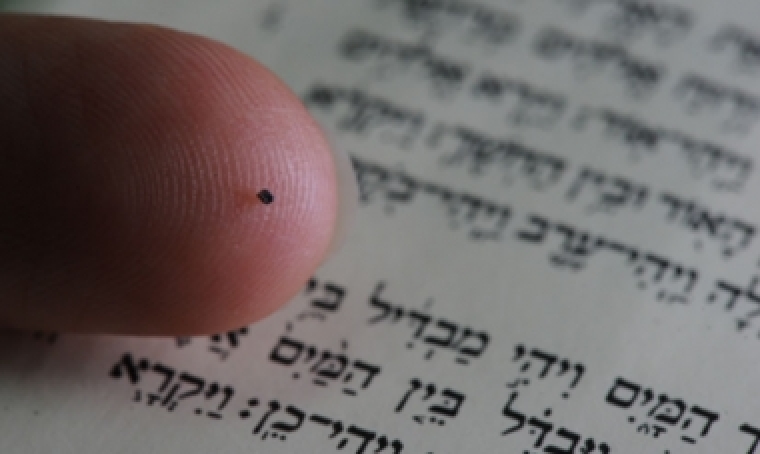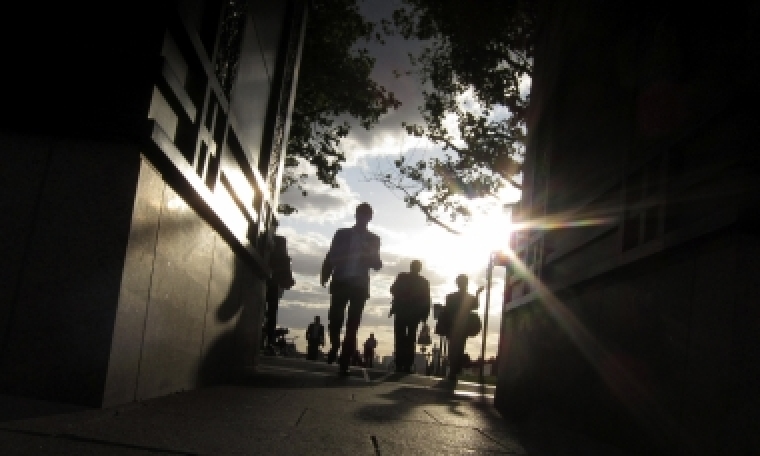

A copy of the Hebrew Bible etched onto a chip the size of a grain of sugar has gone on display for the first time in Jerusalem.
The 'Nano Bible', which contains the 1.2 million Hebrew letters that make up the Old Testament, was created at the Technion – Israel Institute of Technology, the Jerusalem Post reports.
The letters were engraved on the 0.04mm2 gold-plated silicon chip using a focused ion beam generator.
To read the Nano Bible, you need a microscope that can magnify by a factor of 10,000.
The exhibit, called 'And then there was Nano', is part of the Israel Museum's 50th anniversary celebrations. It is housed in the museum's Shrine of the Book, alongside the Dead Sea Scrolls – the oldest known copies of biblical texts. It will be on display until December 2016.
Dr Adolfo Roitman, curator at the Shrine of the Book, explained in an interview with the BBC that the Nano Bible was not an electronic chip, but applied modern nanotechnology to an ancient method.
"It was produced through an ion beam, engraving on the silicon chip all the letters. It's the same technique used by our forefathers in antiquity to engrave, in this case, not just using a chisel but using an ion beam," Roitman said.
In December The Jerusalem Nano Bible company announced that it had developed a chip with the 27 books of the New Testament, written in the original Greek as well as the Old Testament in Hebrew. Their chip, which is 5x5mm is designed it to be mounted onto jewellery and makes the Word of God truly portable.